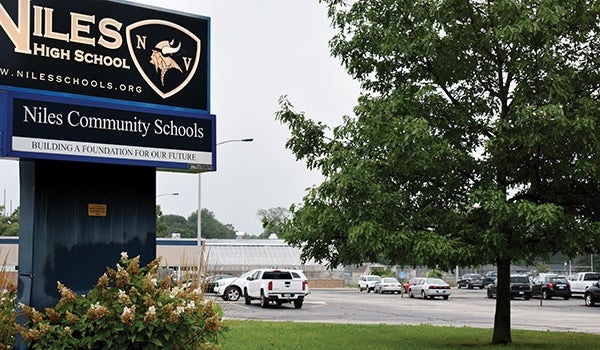Utilities manager answers questions about safety of Niles drinking water
Published 9:41 am Thursday, March 31, 2016
In light of the water crisis in Flint, Jeff Dunlap, director of Niles Utilities Division, presented a report of the city’s water system to the City Council during a committee of the whole meeting Monday.
Dunlap said the utilities department has been shadowing the situation in Flint since the beginning, when high levels of lead were found in Flint drinking water.
The slide show presentation addressed a wide range of water-related questions — everything from where Niles’ water comes from to how much lead, if any, is in Niles water.
Below is a list of frequently asked questions from customers about the city’s water, and the answers to those questions:
Q: Where does Niles drinking water come from?
A: Naturally occurring water aquifers
below ground. All of Niles drinking water comes from ground water. There are six different well heads that take water from deep in the ground, each protected from surface contamination by a designated wellhead protection area.
Q: Is Niles drinking water treated?
A: Due to higher levels of iron naturally occurring in the ground, water on the “east side” of Niles is treated to remove the iron. Treatment includes charcoal filters, phosphate and chlorine. Flouride is also added.
The “west side” water does not contain high levels of iron. In this water, only fluoride is added.
Q: How often is Niles drinking water tested?
A: Daily.
Daily samples are taken at each well site and at the water filtration plant. These samples test for levels of chlorine, fluoride, phosphate and iron.
Monthly, 15 bacteriological samples are taken from around the system.
Every three years lead and copper samples are taken from 30 customer locations. The last lead and copper samples collected and tested were in 2014.
Q: Is there lead in Niles water?
A: In some places, yes. According to city water quality data, the last test found an average level of lead was 2.6 parts per billion with the highest level found at 7.5 parts per billion when 30 samples were taken at customers’ taps in August of 2014. The level at which the EPA takes action is 15 parts per billion.
Niles water exceeds the MDEQ and EPA guidelines for safe levels of lead in drinking water.
Q: Can what happened in Flint happen in Niles?
A: No. Flint switched its source water to the Flint River. Niles has no plans to switch source water.
Flint failed to add corrosion control to new source water. Niles has used corrosion control since 1958.
Q: Does Niles have lead pipes?
A: Yes.
Niles water system mains are comprised of cast iron and ductile iron.
There are some customer water services in the city that are made of lead with less than 1 percent identified so far of the lead services being on the customer’s side of the meter.
There are still many houses that have lead soldered pipes in Niles.
When a lead water service is encountered it is replaced up to the meter at the city’s expense.
Q: How do I know if my service line is lead?
A: First, identify the service line into your house.
Second, use the flat edge of a screwdriver to gently scratch through any corrosion, until the scratched area is slightly shiny. If the scratched area is silver and a magnet will not stick to it, your service line is lead.
Q: I live on the west side of town where no phosphate or chlorine is added to my drinking water. Am I safe?
A: Yes. Niles water is safe.
Seventy-three percent of lead and copper samples were taken from the west side and all were well below the EPA Action Level for lead.
Water on the west side of town has a neutral PH, which means it is unlikely that any lead from your house or service line will leach into your drinking water.
If you have plumbing work done to old pipes in your home, you should flush the lines out before drinking the water.
Q: I want to test the water in my house. How do I do this?
A: Contact a lab certified to test drinking water.
If there is a concern after receiving results at your faucet, Niles utilities will sample and test free of charge at your meter.
Q: What is Niles doing about lead in water?
A: Many things.
• Ensuring that lead and copper monitoring conforms to the rules, guidance and protocols.
• Reviewing and updating its customer service records, which show service line materials owned by the city and the customer.
• Checking its lead and copper sample pool to ensure accuracy and compliance to future sampling criteria.
• Replacing lead service lines, when appropriate. No partial lead service line replacements are being done.
• Continuing corrosion control and monitoring treatment strategies.
• Providing lead and copper monitoring results more quickly to affected residents.
• Researching public information material for dispersal to community.
• If, in the future, an EPA action level exceedance (ALE) does occur, ensuring that the results and educational materials are distributed within our community.
• Mapping lead service lines within our geographic information system.
• Evaluating the most effective solution for providing lead service line information to the public.
• Setting up a voice mailbox to accept calls from the public with questions about lead and copper sampling.
• Exploring options for removal of all lead service lines throughout the city.
• Discussing certification of our city laboratory to test drinking water for lead.






